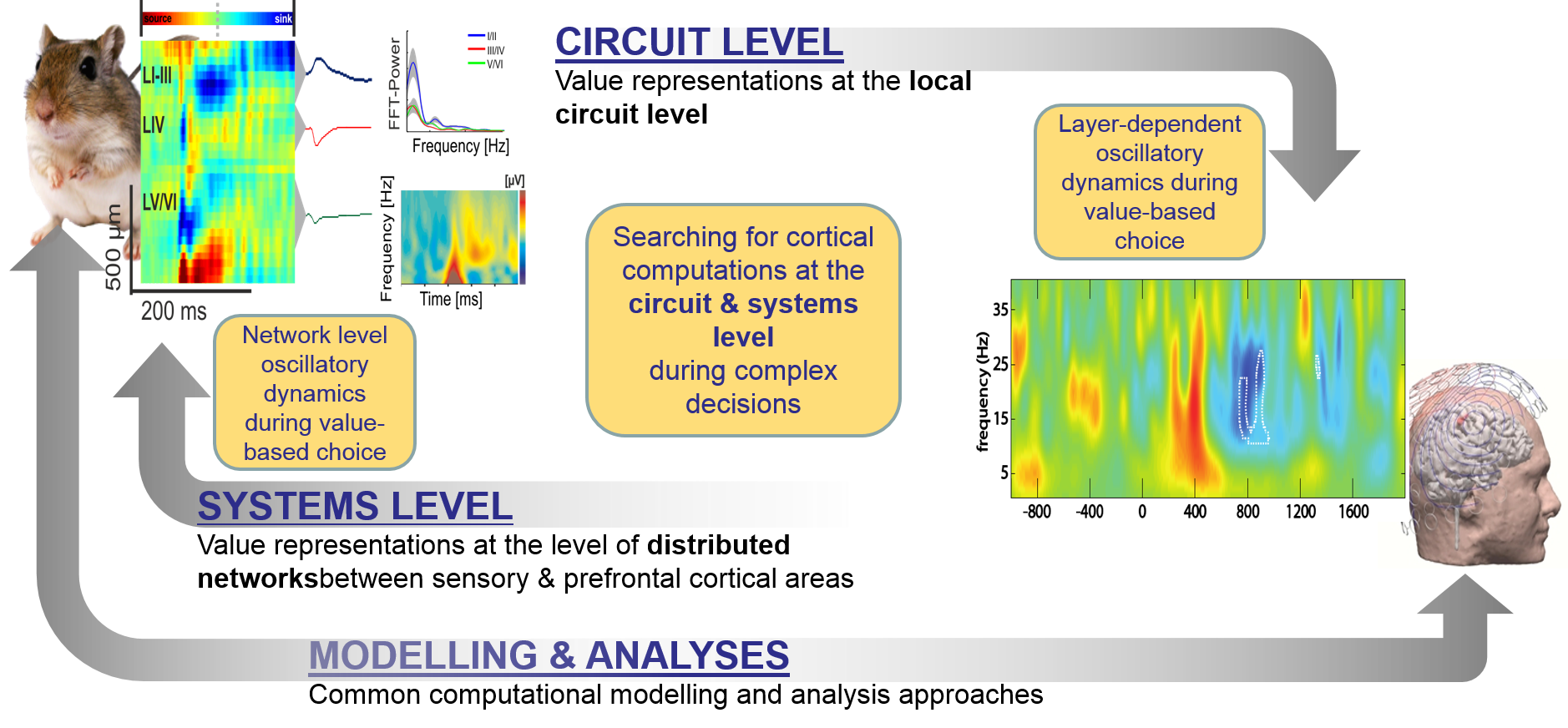Project B16N
Value computations in sensory cortical areas during choice: network mechanisms and neuromodulation

PD Dr. rer. nat. Gerhard Jocham

Dr. rer. nat. Max F.K. Happel
In order to decide amongst several possible courses of action, an organism has to assign value to these alternatives and then make a decision on the basis of these values. Research on the neural mechanisms of decision making has largely focused on the role of prefrontal cortical regions and the basal ganglia. However, representations of value have also been observed in early sensory cortical areas. Studies in rodents suggest that, while decision making in simple situations does not necessarily require an intact primary sensory cortex (of the task-relevant modality), behaviour benefits particularly from its integrity under more complex task conditions. This project therefore investigates basic mechanisms of value representations in sensory cortical areas. We will use both microelectrode recordings from the gerbil primary auditory cortex and magnetoencephalography (MEG) in humans to record activity patterns distributed across the entire neocortex. This combination of methods will allow us to characterise in great breadth and detail the value computations both at the microscopic (cortical layers and defined circuits) and macroscopic (entire cortical region and distributed activity patterns across the entire neocortex) level. These approaches will be combined with pharmacological modulation and computational modelling in order to reveal general mechanisms of sensory cortical value computations.
In gerbils, cortical activity will be recorded while animals perform an auditory discrimination task with repeated reversal of the stimulus-outcome contingencies. In a subsequent step, the time-dependent role of specific neurochemical systems (dopamine, GABA) will be investigated by application of agonists/antagonists at different stages of learning. Furthermore, we will investigate how the introduction of a perceptually ambiguous stimulus affects the value representation of two different, previously learnt stimuli, when the novel stimulus is physically in the middle between the other two stimuli of opposite value. In humans, we will investigate how value representation are maintained in visual cortex during a delay period when subjects make decisions between two options presented to them in temporal succession. In a first step, we will characterise the value representation during the delay both temporally, spatially and spectrally. In subsequent steps the role of neurochemical systems for the dynamics of this value representation will be investigated. In a genetic approach in cooperation with project A08, we will test the influence of a number of candidate polymorphisms affecting glutamatergic and GABAergic transmission on the dynamics of the value representation. Finally, using pharmacological modulation we will directly investigate the role of GABA for the dynamics of value representations and decision making behaviour.
By using common computational models and by applying comparable analysis approaches (such as multivariate pattern classification) to both the rodent and human data, we hope to attain a general and comprehensive understanding of value computations in sensory cortical areas.
